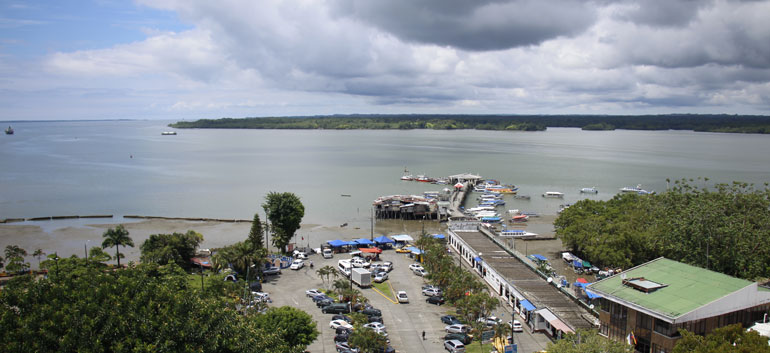Authorities in Colombia’s largest Pacific port, Buenaventura, have found 14 dismembered bodies so far in 2014, after yet another butchered corpse was discovered Tuesday, reported local media.
Unlike other bodies, disposed of in the ocean only to later wash up on shore, the latest apparent victim of the coastal city’s brutal drug war was found stuffed into plastic bags and left along the Buenaventura railway line.
Unable to identify body
The smell of the dismembered body, packed inside a storage container, attracted the attention of neighbors, who then reported the discovery, according to the El Espectador newspaper.
So far, authorities have been unable to identify the body, although one resident, Camilo Torres, speculated that the remains could be those of 17-year-old local Luis Fernando Otero, who has been reported missing since Wednesday of last week.
Relatives of Otero reported that two severed fingers found near his home could have belonged to the missing teenager, reported El Espectador.
Police, however, have stated that until the remains have been properly identified, it will not be possible to confirm the fears of Otero’s family and neighbors.
Extreme violence
This most recent act of savagery brings the total count of dismembered bodies found in Buenaventura up to 14 in 2014. The figure is just one graphic measure of a longstanding human rights crisis that has been fomenting in the city for years now.
MORE: Human rights violations continue in Colombia’s troubled port of Buenaventura: Ombudsman
Positioned on the Pacific coast at the juncture of several important inland waterways, Buenaventura has become the port of choice for narco-trafficking operations to Asia and Central America. The huge volume of cargo that moves through port from legitimate trade makes anti-narcotics efforts difficult, while unemployment and poverty rates well above the national average have contributed to the endemic violence now garnering international attention.
The country’s two largest neoparamilitary groups, “Los Urabeños” and “Los Rastrojos” — the latter working through its local “La Empresa” offshoot — have been fighting for control of Buenaventura’s increasingly profitable drug trade since just after the demobilization of Colombia’s AUC paramilitary bloc in 2006.
The two criminal organizations, which incorporate elements from the AUC and Colombia’s more traditional cartels, move drugs from cultivation areas to the port by river and, from there, ship them to Central American smugglers and to the growing Asian market.
Buenaventura is just one of the many hotspots where the nationally active organizations have come to a head. “Chop houses” were recently discovered throughout the city, where the warring gangs dismember their victims, in a display of violence reminiscent of the beheadings carried out by partner cartels in Mexico.
Forced Displacement
Earlier this year, Colombia’s Ministry of Defense deployed troops to the coastal city to contain the exacerbated human rights crisis. Militarization, however, has done little to stem the bleeding.
The UN made a visit to the city in November 2013 and called on the Colombian government to take action to contain devastating levels of violence which led to a rising homicide rate and the forced displacement of thousands of individuals.
MORE: 112 people displaced in Colombia Pacific port as Buenaventura human rights crisis continues
A recent report by the international NGO Human Rights Watch (HRW) underlined the savagery in the city reporting on “chop houses” where victims are taken by gangs to be tortured and dismembered.
Buenaventura has the highest levels of urban displacement in Colombia, the country with the second most displacement victims in the world. Afro-Colombian communities like those that inhabit Buenaventura are disproportionately victimized by the country’s lonstanding armed conflict.




